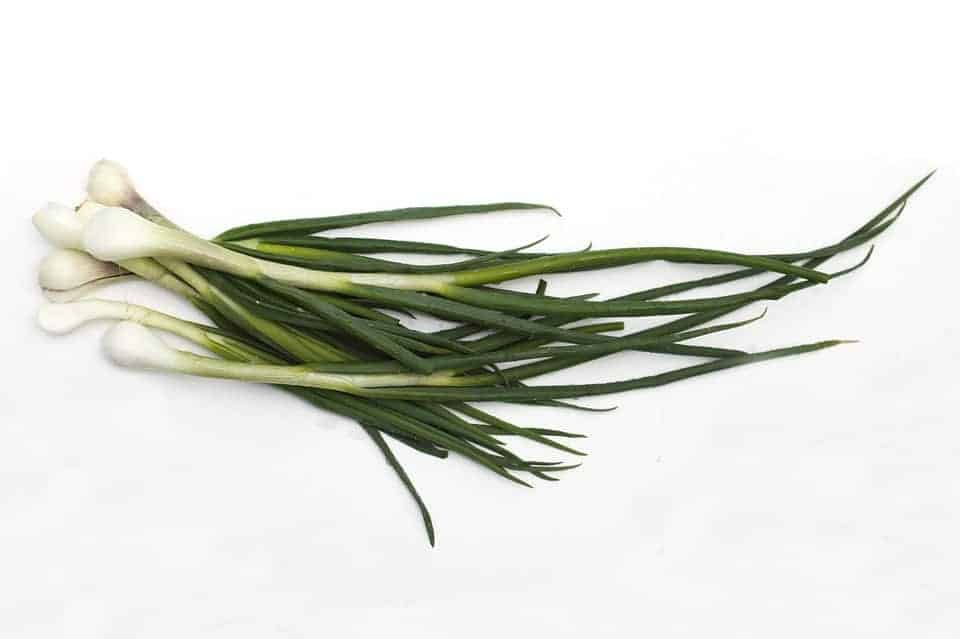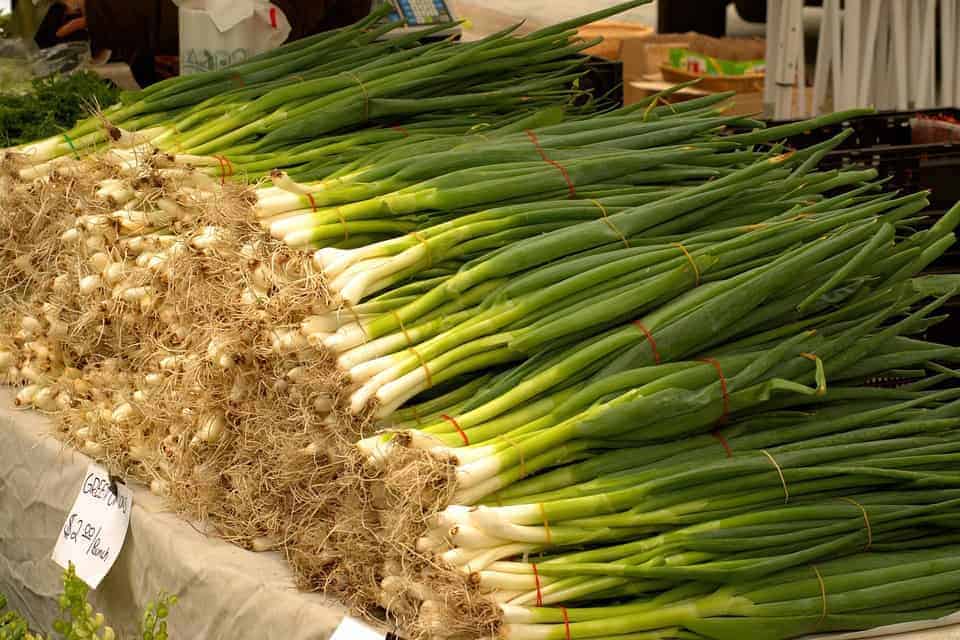Green onions and scallions are by far some of the easiest vegetables to grow, especially if you are tight on space. Just a few can add great flavor to dishes and salads.
Many people don’t realize that green onions and scallions can be grown from seed. This is partly because they are biennial, meaning they normally produce seeds in their second year, and because onion sets (small, immature onions) are sold to gardeners to grow bulb onions. In fact, all members of the onion family can be grown from seed.
On this page:
What Is the Difference Between Green Onions and Scallions?
Green onions and scallions are essentially the same vegetable, except for one minor difference: green onions are more mature than scallions and therefore usually have a very small bulb at the base, while scallions are the same width from top to bottom.
It does get more confusing because some varieties of green onions may remain thin at the base, however, the key takeaway is that whether growing green onions and scallions, they are grown and cared for exactly the same way in the garden.
When to Sow and Transplant Green Onions and Scallions
 Green onions (or scallions) are very quick to mature, with most varieties reaching optimal size in 50 to 65 days. They also can grow well in cool and hot weather. That means when you sow your seeds is not that important.
Green onions (or scallions) are very quick to mature, with most varieties reaching optimal size in 50 to 65 days. They also can grow well in cool and hot weather. That means when you sow your seeds is not that important.
But if you want to start as early as possible, sow your onion seeds indoors up to 8 weeks before your average last frost date – you can find your frost dates here or here. If you are sowing outdoors, do it as soon as the ground is workable (not frozen).
Transplant your green onions or scallions outside around or after your last frost date. Onions can handle a light frost easily, but tender seedlings are more vulnerable.
Because green onions and scallions mature so quickly, you can sow more seeds every few weeks or every month throughout the growing season and transplant outdoors, up to two months before your first frost date, so you can have continual harvests of fresh onions. This is called succession planting.
How to Sow Green Onion and Scallion Seeds
Whether sowing indoors or outdoors, plant onion seeds about 1/4 inch or 1/2 cm deep. If you are starting indoors and transplanting outside later, you can generously sprinkle the seeds and bury them 1/4 inch deep in a small pot with well-draining potting mix. Normally you wouldn’t sow all the seeds together, but green onions and scallions have very tough roots (more on this later).
Keep the pot well watered but not soaking wet, which will encourage the seeds to rot. One tip is to moisten the potting mix and then cover the top with a clear plastic cover to retain moisture until the seeds begin to sprout.
If direct sowing outside, sprinkle a few seeds in each planting hole 2 inches (5 cm) apart. You can thin them out later to one green onion every 2 inches.
You can alternatively not thin them out, sowing 4 to 6 seeds slightly farther apart, around 3 to 4 inches (7.5 to 10 cm), and grow them in small clumps. This is called multisowing, a method of growing certain vegetables has been championed by master market gardener Charles Dowding, who goes into more detail about the process here.
How to Transplant Green Onion and Scallion Seedlings
 If you’ve sown a bunch of green onion seeds close together and are ready to transplant, you might be wondering how you can do it without damaging all those roots. I’ve found over the years is that green onions and scallions have very tough, fibrous roots, and can be easily teased apart and transplanted individually.
If you’ve sown a bunch of green onion seeds close together and are ready to transplant, you might be wondering how you can do it without damaging all those roots. I’ve found over the years is that green onions and scallions have very tough, fibrous roots, and can be easily teased apart and transplanted individually.
First, you should ideally pick a location with full sun, however, green onions and scallions can grow in partial shade, but will take longer to reach maturity.
Gently break up the tangled root ball and carefully tease apart each onion seedling.
Make small holes with a stick, dowel, or your finger, about 2 inches apart, and gently plop each seedling into each hole and cover the roots. It’s okay if the bottom of the stalk is buried.
After transplanting, water in your seedlings. It may take a few days or even more than a week before your floppy transplants perk up and start growing again.
Taking Care of Green Onions and Scallions
Just like their big, bulb-forming cousins, green onions and scallions don’t need much attention once they get established after transplanting.
Ensure your onions don’t dry out, but are not sitting in constantly soggy soil. If you live in a dry location, water your green onions regularly. One tip to know if your onions need water is to use your finger to feel if the top inch of soil is completely dry. If it’s moist, you don’t need to water, even if the soil looks dry on the surface. You can also use mulch to keep the soil evenly moist while also suppressing weeds.
Growing Green Onions and Scallions in Pots
Green onions and scallions are ideal for container gardening. In fact, I prefer growing them in containers.
When it comes to container size for green onions, what matters most is depth. However, because they have shallow roots, you can get away with growing green onions or scallions in a pot that’s 4 inches (10 cm) deep.
As with all container vegetables, always use a well-draining potting mix and make sure your pot has drainage holes on the bottom. They also may require more frequent watering as the plants mature.
Other than that, treat green onions planted in pots the same way you treat them planted in the ground.
When and How to Harvest Green Onions and Scallions
Green onions are edible at any stage of their life, but generally, they start getting harvested right before the tiny bulb begins to form. After the bulb starts forming, you can still harvest your green onions, but mature green onions will be spicier than those harvested young.
To harvest whole green onions or scallions, you can gently pull it up from the base of the stalk. If it’s anchored into the soil, loosen the soil with your finger or a small shovel, being careful not to damage the onion, then pull it out gently. You may need to twist it a bit to loosen it from the soil.
An alternative way to harvest them is by just cutting them at the base and letting them grow back. If you are only interested in the green tops rather than the white bottoms, you can harvest this way and continue getting harvests without having to plant more green onions.
